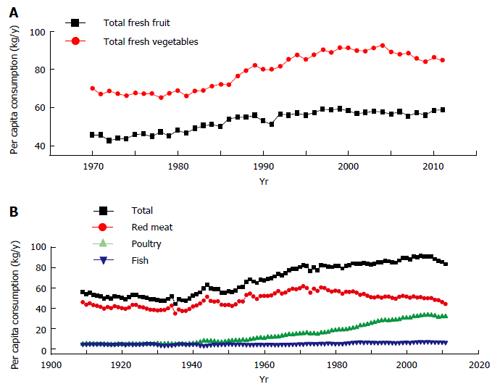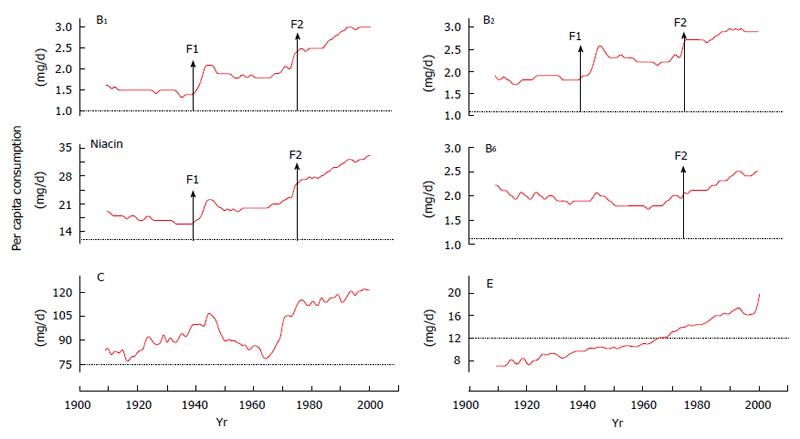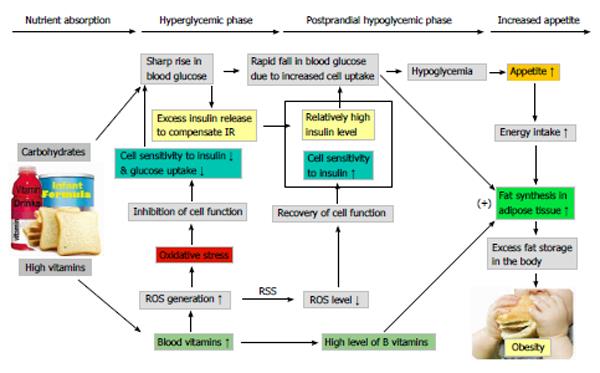Copyright
©2014 Baishideng Publishing Group Co.
Figure 1 Trends in United States per capita consumption of vegetables, fruits (A) and meats (B).
Data are from the Economic Research Service of the United States Department of Agriculture. Available from: URL: http://www.ers.usda.gov/data-products/food-availability-(per-capita)-data-system/.aspx.
Figure 2 United States per capita daily vitamin consumption in 1909-2000.
Data are from the Economic Research Service of the United States Department of Agriculture (http://search.ers.usda.gov/searchaffiliate=ers&query=nutrients.xls). Red line indicates per capita consumption. Dot line indicates EAR. F1: Initiation of flour fortification; F2: Update of nutrient fortification standards for breakfast cereals in 1974[34]; EAR: The estimated daily average requirement.
Figure 3 Lagged correlations between United States per capita niacin consumption and the prevalence of obesity and diabetes.
The lag time between per capita niacin consumption and the prevalence of obesity and diabetes is 10 (A) and 26 years (B), respectively[25,26].
Figure 4 Typical glycemic responses to ingestion of a high glycemic index food and a low glycemic index I food.
This figure is based on literature data[85,87]. GI: Glycemic index.
Figure 5 Proposed mechanism of excess vitamins-induced obesity.
The absorption of sugar stimulates the release of insulin, while absorbed excess vitamins (from vitamin-fortified foods and drinks) generate ROS, leading to a decrease in the sensitivity of peripheral tissues to insulin (i.e., insulin resistance). To compensate the insulin resistance, additional insulin has to be secreted, resulting in a high blood insulin level. Then, the sensitivity of peripheral tissues recovered with the rapid clearance of ROS, consequently, relatively high insulin level causes a rapid decrease in blood glucose due to increased glucose uptake, which may trigger excess energy intake. The conversion of glucose to fat in adipose tissue is promoted by high levels of B vitamins. Therefore, long-term consumption of vitamin fortified foods (including formulas) and drinks may cause fat accumulation in the body and subsequent obesity. ROS: Reactive oxygen species; RSS: ROS scavenging system.
- Citation: Zhou SS, Zhou Y. Excess vitamin intake: An unrecognized risk factor for obesity. World J Diabetes 2014; 5(1): 1-13
- URL: https://www.wjgnet.com/1948-9358/full/v5/i1/1.htm
- DOI: https://dx.doi.org/10.4239/wjd.v5.i1.1

















